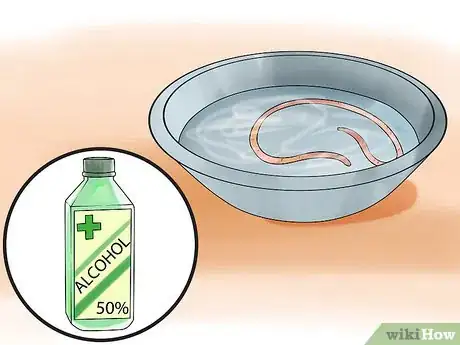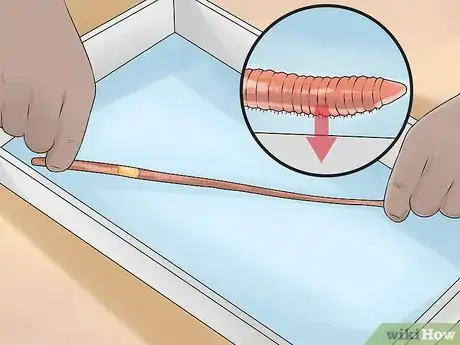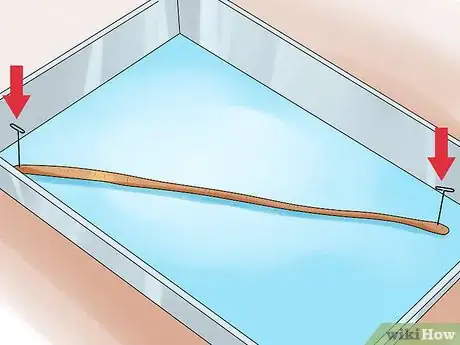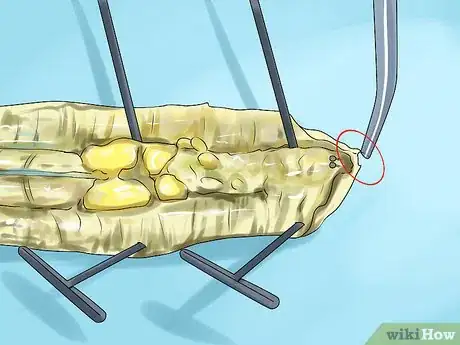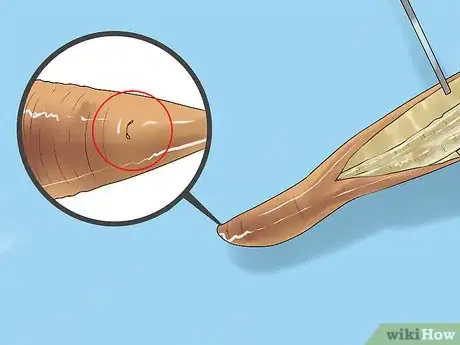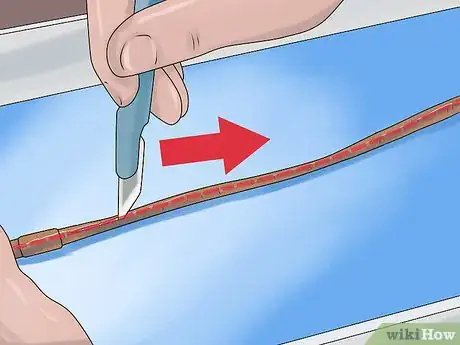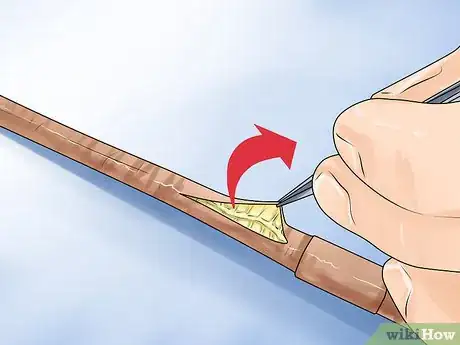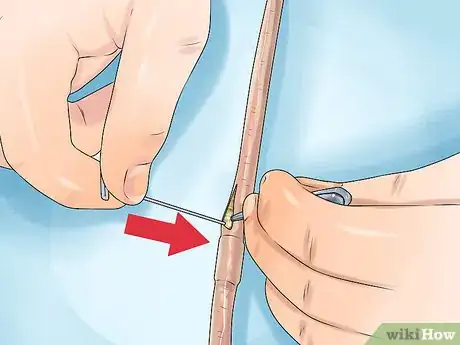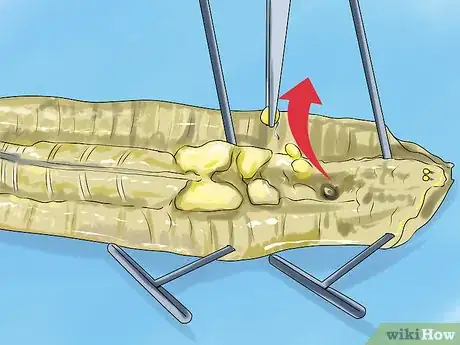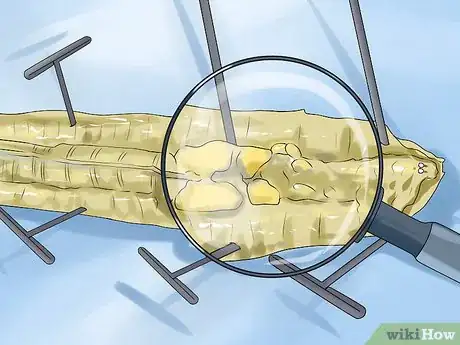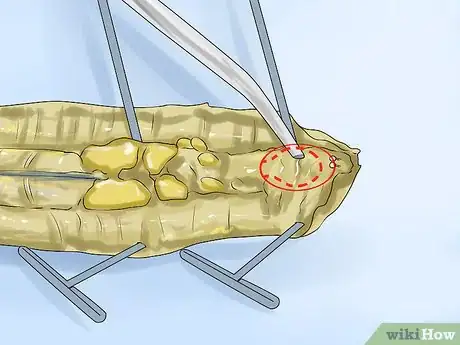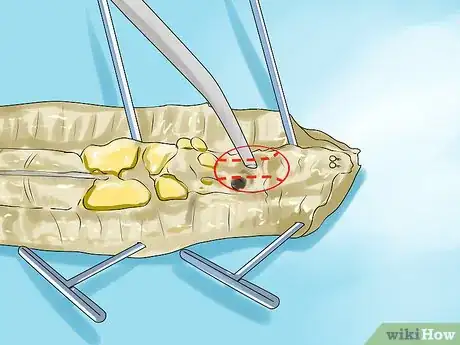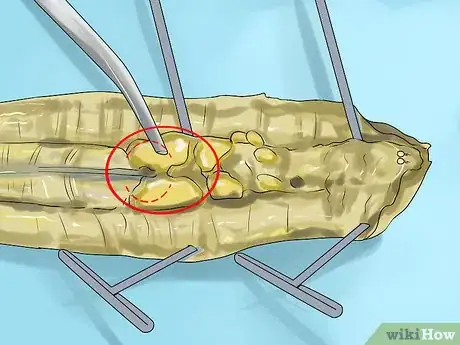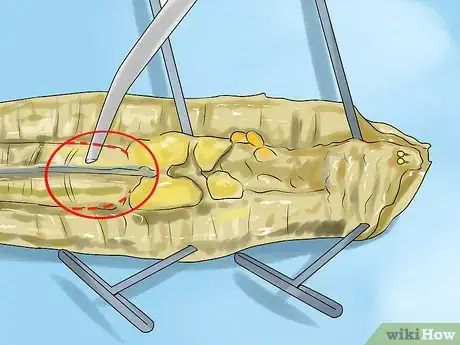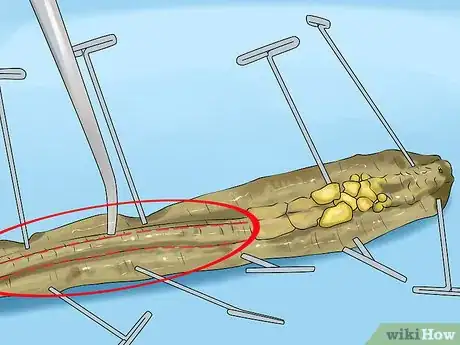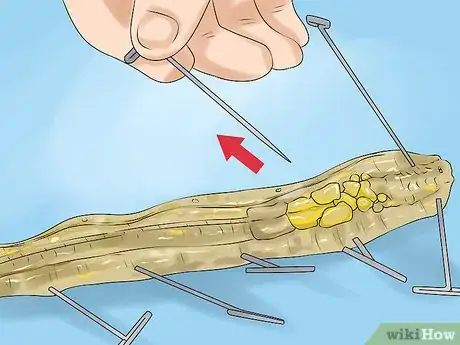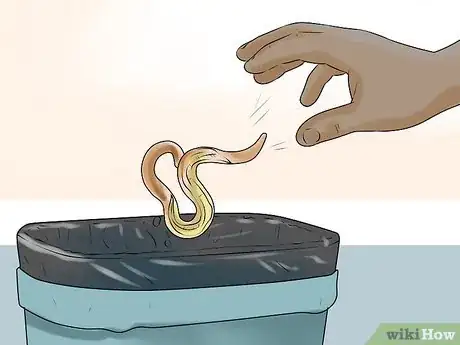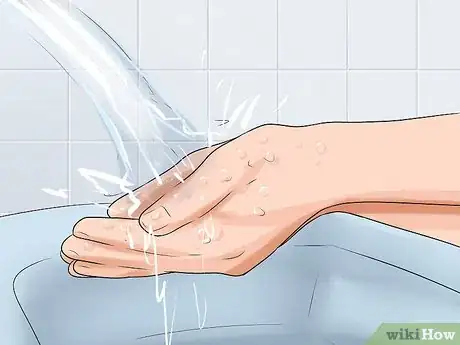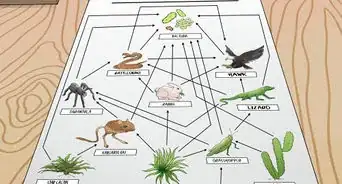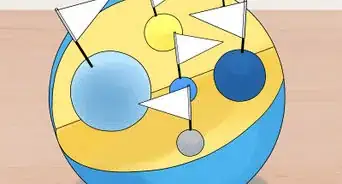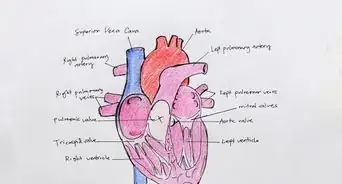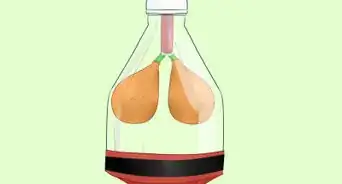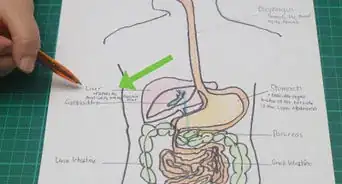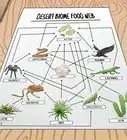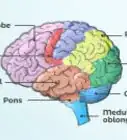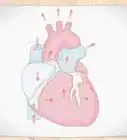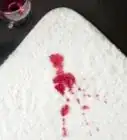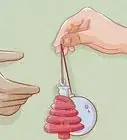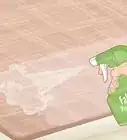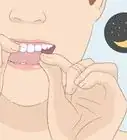This article was co-authored by Bess Ruff, MA. Bess Ruff is a Geography PhD student at Florida State University. She received her MA in Environmental Science and Management from the University of California, Santa Barbara in 2016. She has conducted survey work for marine spatial planning projects in the Caribbean and provided research support as a graduate fellow for the Sustainable Fisheries Group.
There are 8 references cited in this article, which can be found at the bottom of the page.
This article has been viewed 38,024 times.
If you're taking a biology class and your school does not offer alternatives like interactive computer models, you might have to dissect animals. It's best to start small so as to familiarize yourself with the subject and to improve your skills at cutting animals open. The best and most common subject for dissection is worms since they're small and often inexpensive. They are a good first step to familiarizing yourself with higher-level life forms.
Steps
Cutting Open the Worm
-
1Get a worm from your backyard, a gardening or pet store, or online. Look for a big worm, such as an earthworm. You can find 1 in your yard using a small shovel to dig into the soil of a dark, damp area in your yard. Then, gently break up the soil until you locate a worm. You may have to dig multiple holes.[1] If you don't want to find a worm, you can buy them at some gardening stores or at a pet store, where they may be sold as food for other animals. You can also find them online.
- Earthworms may also come out after a rainstorm.
- Some online retailer sell worms specifically prepared for dissection.
- Worms may be sold alongside composting materials at your local gardening store.
-
2Put the worm in a bowl of 50% alcohol. The alcohol causes the body and the muscles to relax. Without that, the worm will most likely be stiff and contracted, making for a harder time dissecting.[2]
- If the worm is already dead, make sure the body is still soft and flexible. Immediately place it in alcohol to preserve the body. Earthworm bodies begin to dry and shrivel quickly after death.[3] For this reason, you should have a container of rubbing alcohol with you when you search for the worm.
- After a few minutes, remove the worm and lightly pat it dry with a paper towel.
- If you buy your worm online already prepared for dissection, it may come in alcohol.
Advertisement -
3Put on your personal protective gear. Just because it's a dissection of an earthworm doesn't mean you can be lax on safety. Wear eye protection, rubber gloves, and an apron or lab coat. Clean all your equipment before and after you go through the dissection. You don't want to get infected with a nasty bacteria or have a dangerous chemical enter your body from accidentally cutting yourself.
-
4Feel for bristles on the body. Turn that side of the body down, facing the surface of the tray. The smoother side should face upward, towards you.
-
5Attach a pin to each end of the worm. This way, you'll avoid accidentally moving it around as you dissect it. Put the pin in as close as to the end as you can without tearing the worm. Then stretch the worm taut and put a pin in the other end.[4]
-
6Identify the mouth of the worm, which will be a landmark for cutting. The mouth is located at 1 end of the worm close to the clitellum. It is the beginning of the digestive system, where food enters the body.
-
7Locate the anus, which will also guide your cut. This is the end of the digestive system where excrement leaves the worm. It is located at the other end of the worm's body.
-
8Find the clitellum and place your knife along it. This is the large band that runs around the body of the worm. Place the end of your knife close to the clitellum at the anus. Point the blade in the direction of the mouth. This end contains many of the organs you will have to identify first.[5]
-
9Cut through the skin from the clitellum to the mouth. Do this carefully, keeping your cut shallow. If you go too deep, you could damage the organs.[6]
-
10Pull the skin back gently with the forceps. Do this for both sides of the worm. Pull back the skin until you can easily see the insides. Make sure to do so slowly and carefully to avoid tearing the skin.
-
11Pin the dissecting needles in the skin. This is to keep the skin from receding back into the body when you're examining it. Make sure not to stretch the skin out too much in order to avoid tearing it.
-
12Remove the organs with the forceps. Focus on the upper end of the body first. Gently place the organs to the side so as to not obstruct your examination of the other parts of the body.
Examining the Organs
-
1Examine the organs with the magnifying glass. Compare them to a diagram of an earthworm. You will likely be required to recognize the parts of the digestive system, which can be identified as a series of small and large bulges separated by narrow indentations.[7]
-
2Identify the pharynx. This is a collection of muscles that suck in food. Below the thin tube that extends from the mouth is a noticeable bulge. This is the pharynx.
-
3Identify the esophagus. The esophagus is the tube where the food passes through from the mouth to the crop. This organ is the tapered area located immediately below the pharynx.
-
4Identify the crop. After food leaves the esophagus, it is temporarily stored in the crop. The crop is another bulge, wider than the pharynx, located directly below the esophagus.
-
5Identify the gizzard. This organ grinds the food down completely. It is the next large bulge of the digestive system. You can find it directly below the crop.
-
6Identify the intestine. The intestine, the bulge directly below the gizzard, performs much of the digestion. In this organ, nutrients are absorbed into the blood stream, while waste products are pushed downward toward the anus.
Finishing the Procedure
-
1Remove the pins. Each pin should be removed carefully one at a time. Place the pins in a cup or tray. Move them to a location where they will not be knocked over.
-
2Dispose of the worm. Do this when you have finished inspecting the organs and taking notes. Because dissected bodies are not considered hazardous waste, they may be placed in the regular landfill trash.[8]
-
3Clean up. Disinfect your tools with rubbing alcohol. Wash your hands with soap and warm water. Thoroughly remove any blood or other remnants of the body from your workspace.
Community Q&A
-
QuestionCan I eat the worm afterwards?
 Bess Ruff, MABess Ruff is a Geography PhD student at Florida State University. She received her MA in Environmental Science and Management from the University of California, Santa Barbara in 2016. She has conducted survey work for marine spatial planning projects in the Caribbean and provided research support as a graduate fellow for the Sustainable Fisheries Group.
Bess Ruff, MABess Ruff is a Geography PhD student at Florida State University. She received her MA in Environmental Science and Management from the University of California, Santa Barbara in 2016. She has conducted survey work for marine spatial planning projects in the Caribbean and provided research support as a graduate fellow for the Sustainable Fisheries Group.
Environmental Scientist You should not eat the worm afterwards. It has been soaked in alcohol and handled excessively, so it is not fit for consumption.
You should not eat the worm afterwards. It has been soaked in alcohol and handled excessively, so it is not fit for consumption. -
QuestionWhat if our school makes us use the medical scissors instead of a scalpel? How do I cut it open then?
 TapTacoCommunity AnswerYou use one end of the medical scissors and kind of pretend it is a scalpel.
TapTacoCommunity AnswerYou use one end of the medical scissors and kind of pretend it is a scalpel. -
QuestionWhy is there no blood?
 Community AnswerWorms don't have a ton of blood to begin with, and depending on any preservatives used prior to the dissection, the blood may have dried up.
Community AnswerWorms don't have a ton of blood to begin with, and depending on any preservatives used prior to the dissection, the blood may have dried up.
Warnings
- Wear personal protective gear at all times.⧼thumbs_response⧽
Things You'll Need
- Protective eyewear
- Gloves
- Apron or lab coat
- Dissection tray
- Dissection pins
- Scalpel or exacto knife
- Rubbing alcohol
- Toothpicks
- Dissection scissors
- Magnifying glass
- Light source
- Forceps
- Diagram of the earthworm organs
References
- ↑ http://atlantabg.org/content/4-learn/5-educator-resources/1-deciduous-forest/digging_for_earthworms.pdf
- ↑ http://www.microscopy-uk.org.uk/mag/indexmag.html?http://www.microscopy-uk.org.uk/mag/articles/worm.html
- ↑ http://www.dec.ny.gov/docs/materials_minerals_pdf/rw.pdf
- ↑ http://faculty.sdmiramar.edu/dtrubovitz/biol/earthworm/
- ↑ http://www.mhhe.com/biosci/genbio/virtual_labs/BL_14/BL_14.html
- ↑ https://www.carolina.com/teacher-resources/Interactive/earthworm-dissection-guide/tr10714.tr
- ↑ http://www.sas.upenn.edu/~rlenet/Earthworms.html
- ↑ http://www.uft.org/chapters/lab-specialists/dissection-practices
About This Article
If you want to practice dissecting a worm, get a big worm, like an earthworm, from your backyard, online, or a gardening or pet store. Put the worm in a bowl of 50% alcohol to make the body soft and to keep it preserved. Before you start, put on safety glasses and rubber gloves to protect yourself from bacteria and dangerous chemicals. To begin, pull the worm tight and pin it down at each end. Start by making a shallow cut from end to end, and then gently pull the skin back with forceps. As you look at the organs, use a magnifying glass and compare the inside of the worm to a scientific diagram. For more tips from our Environmental co-author, like how to identify different organs such as the gizzard, intestines, and pharynx, keep reading!
